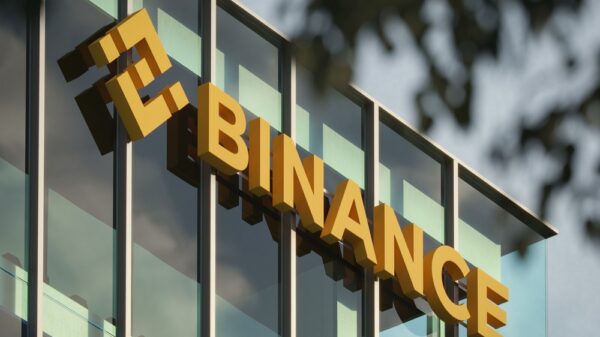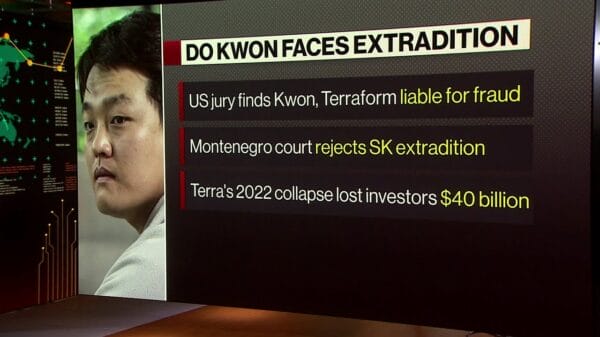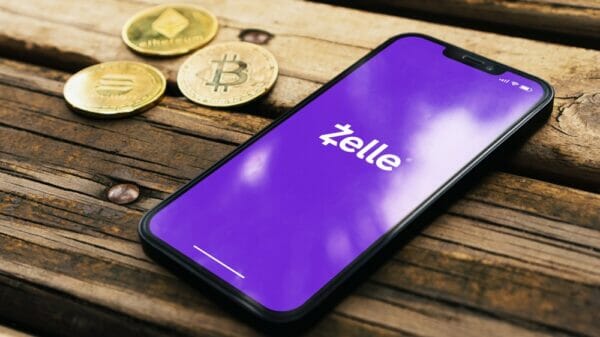**Crypto’s ‘10x’ Moment Could Finally Be Here With zk-EVMs**
**Crypto is evolving similarly to the early internet**, according to Steve Newcomb, the chief product officer of Matter Labs. He compares the current state of crypto to the internet in 1996 when it was slow and had limited practical uses. However, just like the internet, a significant improvement in speed and security could propel crypto into widespread adoption becoming an essential part of daily life globally.
Newcomb explained that in the past, people were skeptical about using their credit cards online, considering it a passing trend with no real utility. But with advancements such as increased bandwidth and the introduction of SSL and HTTPS protocols, the internet saw a significant boost in trust and functionality around 2005, leading to a surge in e-commerce activities.
The crypto space could be on the brink of a similar breakthrough with the launch of zkSync’s Ethereum Virtual Machine (EVM) compatible mainnet on October 28. The EVM acts as the operational system for Ethereum, and implementing zero-knowledge rollups technology could enhance speed and reduce costs dramatically for all applications running on the Ethereum network.
Various solutions are tackling these issues, with Polygon launching its zkEVM testnet this week and prominent platforms like Aave, Uniswap, and Lens committing to deploying on it. Additionally, Scroll and StarkWare have also made significant strides in processing millions of transactions monthly to address the scalability challenges faced by the crypto industry.
Ethereum co-founder Vitalik Buterin emphasized that ZK rollups could restore crypto’s functionality for payments. This technology enables multiple transactions to be processed off-chain with a concise validity proof, reducing the load on the Ethereum blockchain. As a result, ZK rollups offer a significant scalability improvement compared to Ethereum’s current transaction processing capacity.
In the quest for scalable solutions, StarkWare introduced a custom programming language called Cairo to optimize performance. However, there is ongoing debate regarding the most efficient approach, with some advocating for compatibility with the EVM for smoother adoption by existing platforms and developers.
In summary, the burgeoning advancements in ZK rollups and EVM scalability promise a transformative phase for the crypto industry, potentially unlocking its full potential by enabling faster transactions, reducing costs, and enhancing overall efficiency.
**What is a zero knowledge rollup, or zk rollup?**
ZK rollups have emerged as a key innovation in blockchain technology. These solutions facilitate the processing of numerous transactions off-chain, verified by a compact validity proof to ensure accuracy. By consolidating multiple transactions into a single Ethereum transaction, ZK rollups offer a substantial improvement in processing speed over the current Ethereum network capacity.
The adoption of ZK rollups has already shown promise in various sectors such as NFTs and financial transactions, providing a glimpse into the transformative potential of this technology for broader use cases within the crypto ecosystem.
**Scaling versus compatibility**
The debate between scalability and compatibility with the EVM is a crucial consideration for future developments in the crypto space. While solutions like StarkWare prioritize scalability through custom languages, others like zkSync aim to maintain compatibility with the EVM for seamless integration with existing applications and protocols.
The choice between total compatibility and enhanced scalability presents a trade-off for developers and users. While scaling solutions may offer superior performance, ensuring compatibility with existing infrastructure remains a priority to minimize adoption barriers and streamline the migration process for decentralized applications.
As the crypto industry continues to evolve, striking a balance between scalability and compatibility will be essential to unlock the full potential of blockchain technology and drive widespread adoption across diverse sectors.The introduction of Polygon’s zkEVM marks a significant advancement in the field, with potential to cut Ethereum’s network fees by around 90% and boost the network’s capacity significantly. By making the technology open source, the team aims to enhance security and transparency within the industry, allowing for peer review of the codebase to identify and address any potential issues.
In the technical realm, there are different types of zkEVMs, including bytecode, language, and consensus levels. While zkSync and StarkWare operate at the language level, requiring additional steps for compilation, Scroll and Polygon utilize a bytecode approach. This difference in methodology can impact the compatibility with Solidity smart contracts and the accessibility of developer tools.
zkSync boasts compatibility with most of Ethereum’s Opcodes, providing improved performance and cost-effectiveness compared to equivalent solutions. Leveraging an LLVM compiler within its chain allows for greater flexibility in coding languages, enhancing adoption and scalability.
The concept of recursive scaling, exemplified by StarkWare’s implementation, has shown promising results in compressing transactions and reducing costs. With the potential for infinite scalability, recursive rollups pave the way for broader adoption and utilization of blockchain technology in various sectors, including finance.
Polygon’s Plonky2 solution, a recursive SNARK technology, promises faster transaction verification and compatibility with the Ethereum Virtual Machine. On the other hand, zkSync’s Layer 3 development, known as Pathfinder, is gearing up for production, aligning with Ethereum’s Proto-Danksharding upgrade. This evolution aims to address scalability challenges and eliminate the need for interchain bridges, reducing vulnerabilities and enhancing interoperability across blockchain networks.
By focusing on improving speed, reducing costs, expanding language support, and eliminating interchain bridges, these innovations in Layer 3 solutions are poised to revolutionize blockchain technology and pave the way for mass adoption. As the industry continues to advance, the integration of zk rollups and EVM-compatible scaling solutions holds the promise of transforming the blockchain landscape.The issue of data availability in ZK rollups remains unresolved. While these rollups effectively reduce the computational load on Ethereum, they still require data to be written back to the main chain. This is crucial in case the rollup malfunctions or is compromised, allowing another entity to step in and reconcile financial obligations.
The Ethereum roadmap, particularly with proto danksharding and full danksharding, focuses on addressing this data availability challenge to accommodate more data. One current workaround involves storing data on Validiums, which are cost-effective but offer less security.
Polygon is actively developing solutions for this problem, such as Avail, a blockchain designed to ensure information accessibility at all times. Additionally, zkSync’s Pathfinder will provide developers with three data availability options: Validium, zkPorter (combining on-chain and off-chain processing), and ZKRollup (highest security).
The launch of zkSync’s mainnet on October 28 may initially seem unremarkable, starting with a period of testing by Matter Labs and incentivizing users to identify vulnerabilities. Subsequently, DApps will be able to migrate, commence development, and undergo security trials.
Upon completion of all necessary steps, a comprehensive onboarding process named “lift in the gate” will allow all users to enter simultaneously. This fair release program aims to ensure equal treatment for all projects, with an anticipated launch involving 150 projects, eliminating the need for projects to wait for Polygon’s solution.
In comparison, projects waiting for Polygon’s solution can be likened to showing up at a race track with a car chassis lacking essential components, while zkSync is described as a fully-equipped Ferrari ready for action.
Image Source: Rabanser / Shutterstock













































